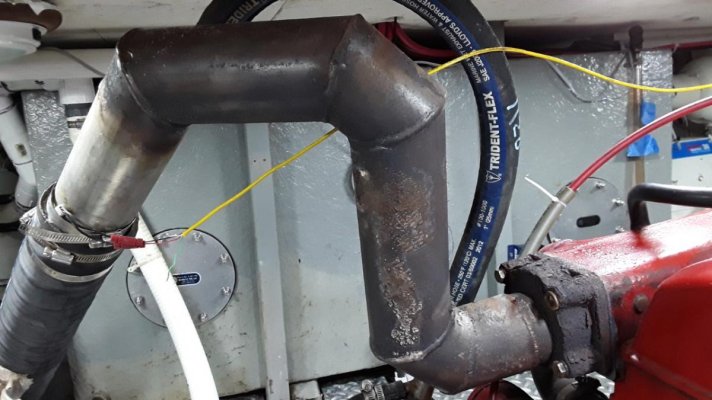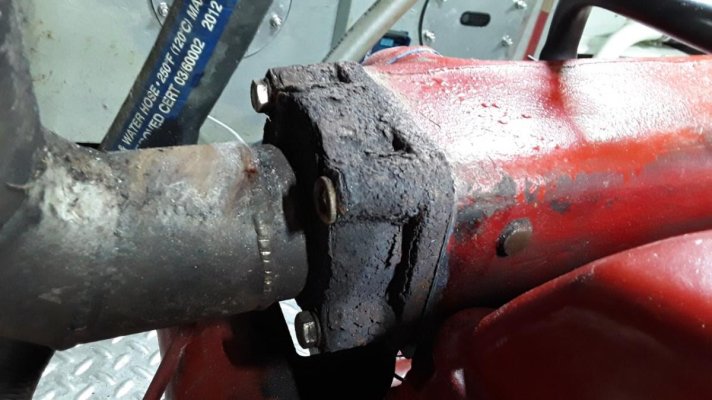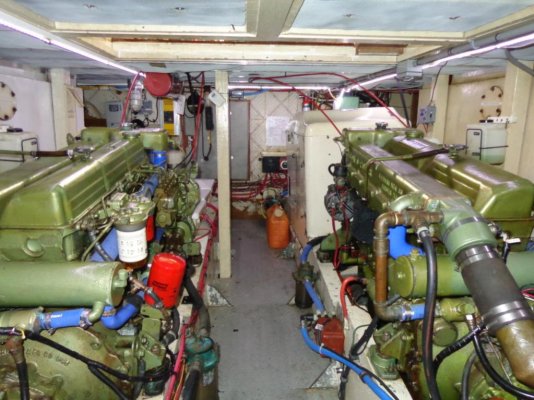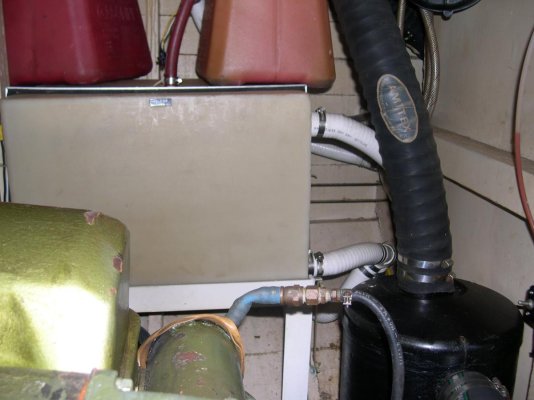I have an exhaust elbow fix in my future. I think the first owner had a custom-made stainless exhaust fitted (pre 1991). The first owner was in California and the heat lagging has a California business name on it. The lagging was removed for these photos. A stainless pipe was welded to a modified cast iron exhaust elbow so that the cooling water is injected well down stream. You can tell where the water enters on the backside because the stainless isn't discolored from heat.
The engine was out and rebuilt in 2019, so I know that the exhaust was disconnected at that time. What surprised me was that when removing the lagging I could see that one of the 4 exhaust elbow bolts (top right) was missing its head having been broken flush with the elbow. I could see that the fitting had apparently been hit with a cold chisel to remove (it shows on the weld).
The bolt could have been broken when the elbow was reattached and owner or mechanic decided not to fix, but who knows. The whole things is caked in rust, including the severed area of the bolt, so I can't really tell how long the problem (or soon to be problem) has existed.
If the stainless exhaust pipe is removed and is okay, why not cut off the cast iron piece and simply weld on a thick stainless plate with the same bolt pattern? (And why wasn't that done in the first place?) Mating to the original cast iron might have saved a few bucks back when, but not in the long run. I could get a new stainless elbow and cut it up to fit, but that seems like a waste. Maybe not depending on shop fees for drafting, milling, etc., for plate stainless.
The modification looks like it could put some stress on the attachment point, but it doesn't seem to have been a problem. No leaks at present even with only three bolts and the cast iron appears to be decades old.
Doesn't seem to be a good place to wait until failure to address this. Any suggestions appreciated.





